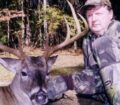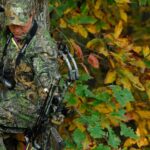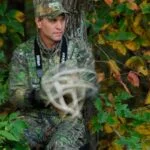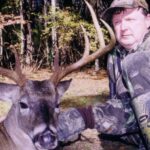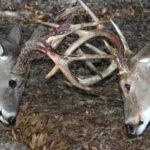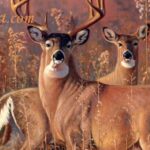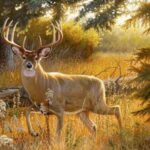Editor’s Note: Eddie Salter of Brewton, Alabama, began hunting at a very young age. Salter started calling turkeys competitively in 1981 and has amassed an impressive list of titles, including two World Open Turkey Calling Championships. He’s known nationally for his deer-hunting prowess and has starred on many outdoor TV shows and in numerous videos. This week Salter discusses tactics for taking deer.
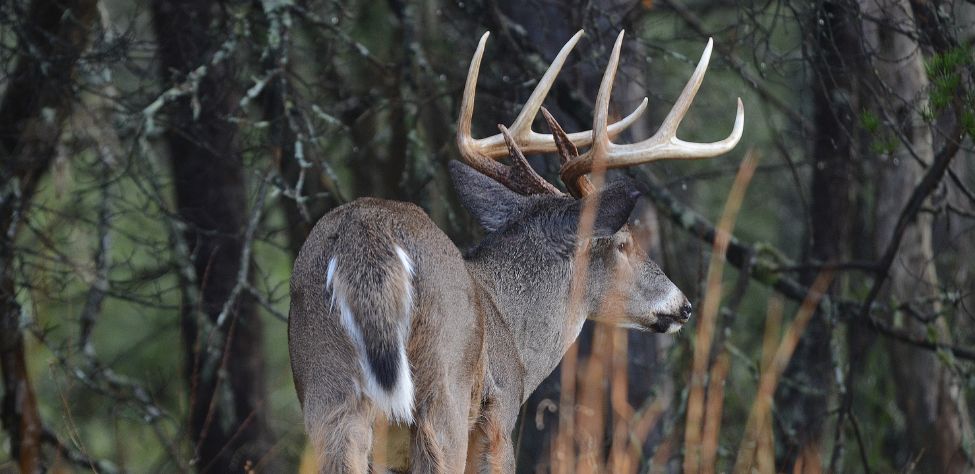
Where You Hunt
The area you hunt plays a determining factor in the effectiveness of your hunting and rattling. If you’re hunting in regions with sparse deer density, where the sex ratio of bucks to does is 1 to 1, or where there are more does than bucks, rattling and grunting will be the most effective. The fewer deer the land has, and the closer the sex ratio of the deer, the more deer you can expect to see when you rattle and grunt. In the Midwest, Texas, and Canada, where deer numbers are relatively low, rattling and grunting can pay back dividends. In states such as Alabama, South Carolina, and Florida, where deer numbers are high, rattling and grunting will be less effective.
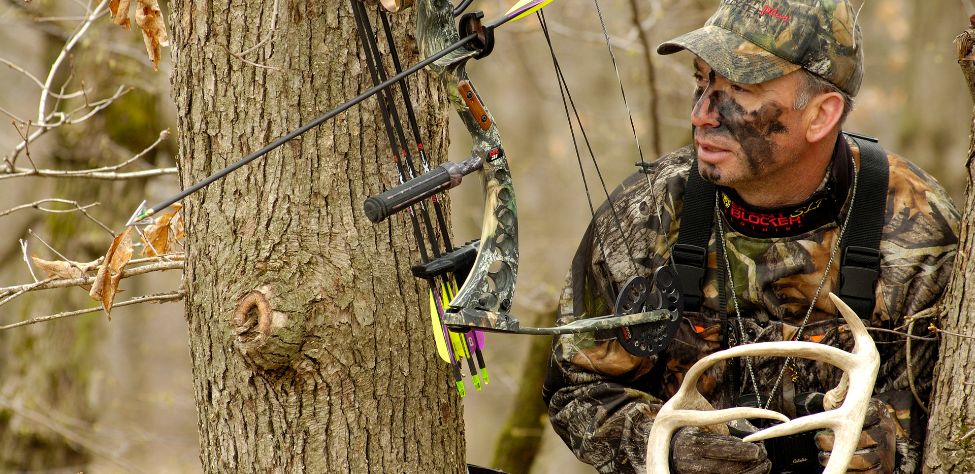
What You’re Trying to Say to the Deer
Another factor that affects your hunting success has to do with what you’re trying to say to the deer through your rattles and grunts. Calling deer isn’t that much different from calling turkeys. If you yelp on a box, you will probably call in a few turkeys. However, if you put some emotion into those same yelps, such as cutting, cackling, and/or yelping back to a gobbler, you’ll bring more turkeys to your calls. The emotion the caller invokes can drastically change the effectiveness of the call. We have all heard the saying, “It’s not what you say, but how you say it.” This statement holds, too, whether you’re talking to a deer or a turkey. When you’re talking to a deer, what you say to him isn’t nearly as important as how you say it.
For example, if you walk into the room and your wife starts talking to you in a low tone, you may not pay any attention to her. However, if her voice becomes high-pitched, you’re more likely to pay attention. Deer calling has the same effect on deer that your wife’s talking can have on you. The same is true about the conversation you try to carry on with a deer. When you walk through the living room, your wife says, “Good morning, honey, how are you?” you may not pay much attention to her. But, if you walk through the room one morning, and she says the same thing but also includes the information that she has an apple pie, delicious sandwiches, and your favorite coffee ready, you definitely will pay more attention to her, and you may even kiss her.
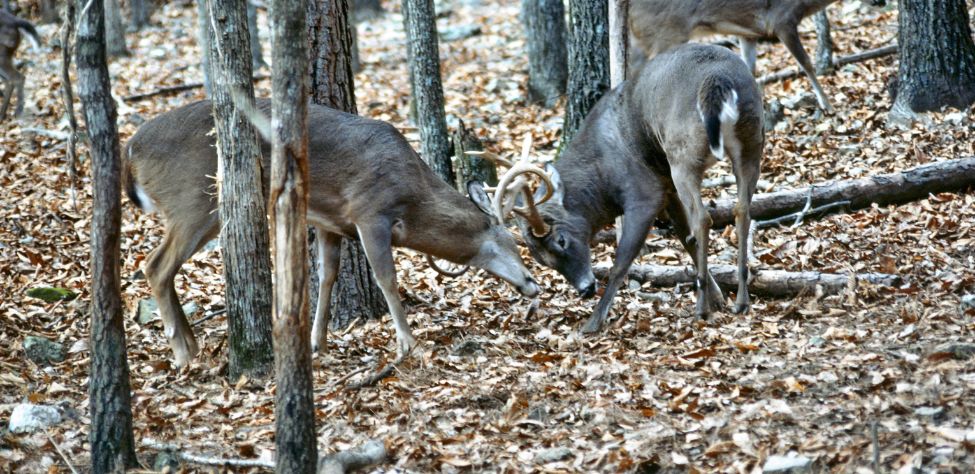
Why Change Up The Conversation
When you’re calling deer, remember also to change up the conversation. Don’t get into the habit of blowing three grunts, waiting five minutes by the clock, and then repeating that process over and over again. Instead, vary the length and the emotion of the conversation, and you will be more successful in bringing a deer into shooting range.
Let’s compare this notion of changing-up calls to variations in conversation. Many times, I call louder to one turkey than another turkey. When I’m trying to get the turkey to gobble, not only do I use three or four different calls, but I also vary the amount I call and the series of calls until the turkey starts telling me how he wants me to talk to him. Deer calling works the same way. Sometimes I give numbers of grunts, but they may be short grunts, long grunts, extended grunts, high-pitched grunts, low-pitched grunts, buck grunts and then doe grunts. Sometimes, I tickle the antlers together slightly to make a sound like two young bucks testing each other. Or, I may use a rattling bag, which sounds like a full-blown deer fight.
Don’t be afraid to be versatile in your calling. If I’m calling, but the deer aren’t coming, I must change my calling sequence, frequency, and/or pitch. You have a lot of variables to work with when calling in deer. Change your calling so you won’t overuse any conversation, and you’ll find that you can call deer more effectively.
Expert Guidebooks on BowHunting Deer: Best Sellers

How to Hunt Deer Up Close with Bows, Rifles, Muzzleloaders and Crossbows
To be more successful as a deer hunter, learn all you can about the animal, the wind, the temperature and the techniques required to get in close.
In this book, you’ll hear about some of the best hunters in the nation who know how to hunt deer close, including one of the greatest archers who ever lived, Howard Hill.
John E. Phillips also shares his own deer stories and hunting tips from 50 years of experience.
VERSIONS: AUDIBLE, KINDLE & PRINT
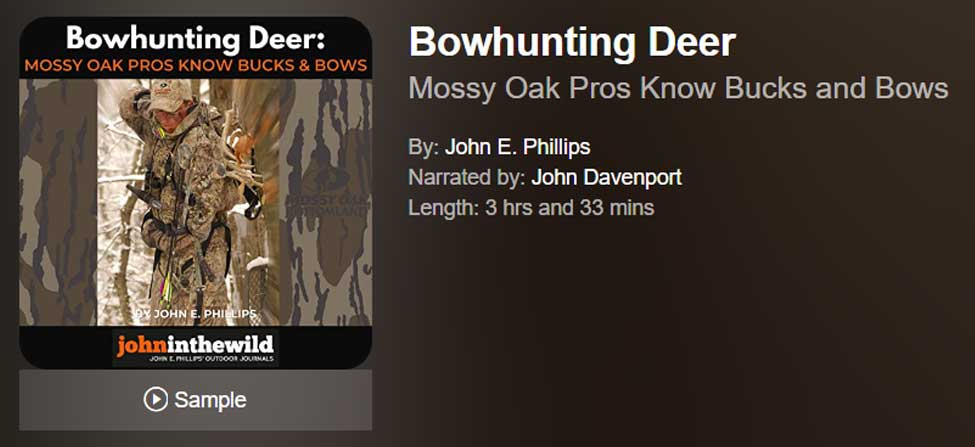
Many deer hunters have told me: “I want a deer-hunting book with regular hunters who are just like me” and “I want a deer-hunting book with the best advice from the best professional deer hunters in the nation”.
Mossy Oak’s Pro Staff is made up of some of the nation’s best deer hunters, professional deer hunters, and TV hosts whose names and advice often are heard in deer camps all over the nation. But many of the more than 1,000 Mossy Oak Pro Staff hunters are everyday, weekend, and vacation deer hunters just like you.
Whether you hunt private or public lands, you’ll find tips and tactics in this book from the Mossy Oak Pro Staff that will increase your odds for locating and taking the bucks of your dreams.
If you’re serious about learning to hunt and take deer with a bow, if you’re looking for a different strategy that will help you identify and harvest big bucks, if you want to learn from your misses as well as from the shots that connect, and if you enjoy being in the great outdoors that the Good Lord has blessed us with, then this book is for you.
VERSIONS: AUDIBLE, KINDLE & PRINT

How to Hunt and Take Big Buck Deer on Small Properties
In this book, you’ll hear from 14 hunters who either have gained permission or leased properties as small as six acres to as much as 250 acres, and how they consistently take older-age-class bucks off these little lands.
VERSIONS: AUDIBLE, KINDLE & PRINT

Jim Crumley’s Secrets of Bowhunting Deer
Using a black magic marker and a gray work jumpsuit, Jim Crumley of Buchanan, Virginia, drastically changed the nature and purpose of hunting camouflage when he created the first sportsman’s camouflage – Trebark. Crumley’s love of bowhunting and his desire to be more invisible changed hunting clothing forever.
In this hunting guide, he shares the wisdom that he’s learned throughout his lifetime about how to be a hunter, how to find a deer lease, how to scout for deer, and more.
Special features include how to:
- Have a magic 60 acres to hunt
- Decide the best equipment to use
- Find deer year-round
- Locate land to hunt
- Know the best place to put your tree stand
- Get bucks within bow range
VERSIONS: AUDIBLE, KINDLE & PRINT

How to Hunt Deer Like a Pro
How do you know if the land you hunt has a trophy deer on it? Wildlife manager Bob Zaiglin, of Uvalde, Texas and Jim Crumley, the father of modern-day hunting camouflage, tells you how to find out. GPS can make finding and taking that trophy buck easier. This hunting guide will teach you how to hunt big bucks where no one else can find them, how to call deer, and how to become versatile as a deer hunter, so that if one deer tactic doesn’t work, another one will.
In the chapter, “How to find Bucks at Scrape,” Dr. Keith Causey, retired professor of Wildlife Science at Auburn University, describes the best way to hunt a scrape.
Brad Harrison of Neosho, Missouri, is a nationally-known videographer, professional deer hunter and master at calling deer. Another master is Will Primos of Primos Game Calls. These two experts will tell the best deer calls and when to use them in this book.
And for over 20 years, Bo Pitman, lodge manager of White Oak Plantation, has been studying deer movement patterns. He explains what types of conditions are best for predicting deer movement.
VERSIONS: AUDIBLE, KINDLE & PRINT

Deer hunting and deer hunters are drastically changing each year. To learn new techniques for hunting deer and have more places to hunt, I’ve interviewed some of the best deer hunters in the nation and share their tactics in How to Hunt Deer Like a Pro: Volume II.
In Chapter 10, Jacob Lamar tells you his tactics for consistently taking older-age-class bucks on public lands in several states. Chapter 11, Bob Walker explains how to find places on public lands where you can hunt that 99 percent of the other hunters never have considered hunting. The Bonus Chapter with David Ramey tells you how, where, when and with what equipment to take big Kansas bucks on public lands by hunting in 100-degree weather when others won’t hunt.
Chapter 13, Mark Drury, his family and his guests take mature bucks every season by having more small places to hunt rather than one large property. Drury explains the strategy of having satellite farms to hunt that only may be 50-150 acres each or less. Chapter 15, Pat Reeve, who hunts far-northern states and Canada, says, “I don’t like hunting for mature bucks until the weather is 20 degrees or less.” Chapter 4, Dr. Larry Marchinton says that funnels are the most-reliable stand sites to hunt for big bucks and tells why.
VERSIONS: AUDIBLE & PRINT
Tomorrow: Ways to Decide How to Call Deer


